Search
- Page Path
-
- HOME
- Search
- Original Article
- Neonatology (Perinatology)
- Mortality of very low birth weight infants by neonatal intensive care unit workload and regional group status
- Sung-Hoon Chung, Chae Young Kim, Yong-Sung Choi, Myung Hee Lee, Jae Woo Lim, Byong Sop Lee, Ki-Soo Kim; the Korean Neonatal Network
- Clin Exp Pediatr. 2024;67(11):619-627. Published online September 12, 2024
-

Question: How do structural and staffing characteristics of neonatal intensive care units (NICUs) influence the mortality rates of very low birth weight infants (VLBWIs)?
Findings: NICUs with higher staffing levels, particularly with more neonatologists, and those offering advanced care levels were associated with lower mortality rates. Additionally, regional disparities were observed, with some areas demon-strating significantly higher survival rates.
Meaning: Adequate staffing and equitable regional distribution of medical resources are crucial for improving survival outcomes in VLBWIs. Efforts to enhance NICU staffing and address regional healthcare disparities are essential for optimizing care quality and reducing mortality in this vulnerable population.
- Review Article
- Neonatology (Perinatology)
- Neurodevelopmental outcomes of preterm infants
- In Gyu Song
- Clin Exp Pediatr. 2023;66(7):281-287. Published online December 30, 2022
-

· Among survivors, 60.9% of infants born at 22 weeks’ gestation had moderate to severe impairments, whereas 50.3% born at 23 weeks’ and 42.2% at 24 weeks’ gestation had moderate to severe impairments.
· Moderate and late preterm infants reportedly have less severe disease than very preterm infants, but they still experience adverse neurodevelopmental outcomes.
· The careful follow-up and early detection of developmental problems in these patients are required.
- Original Article
- Neonatology (Perinatology)
- Mediation effect of cord blood cortisol levels between maternal prepregnancy body mass index and birth weight: a hospital-based cross-sectional study
- Nisanth Selvam, Jayashree K, Prasanna Mithra
- Clin Exp Pediatr. 2022;65(10):500-506. Published online July 29, 2022
-

Question: What is the association between cord blood cortisol and maternal weight, birth weight, and cord blood lipid profile?
Finding: Cord blood cortisol levels did not influence the relationship between maternal weight changes or birth weight. Maternal weight changes, birth weight, and cortisol levels altered the cord blood lipid profile.
Meaning: Our findings may aid United Nations Sustainable Development Goal 3 (Good Health and Well-Being) achievement by 2030.
- Review Article
- Endocrinology
- Pediatric hypertension based on Japanese Society of Hypertension Guidelines (JSH 2019) with actual school blood pressure screening data in Japan
- Toru Kikuchi
- Clin Exp Pediatr. 2022;65(6):283-290. Published online November 26, 2021
-

The prevalence of Japanese pediatric hypertension is 0.9% based on proper measurement protocols. Hypertensive children tend to be hypertensive adults. Pediatric essential hypertension is characterized by an absence of symptoms, obesity, a family history of hypertension, and a low birth weight. The most common causes of pediatric secondary hypertension are renal parenchymal and renovascular diseases. Important factors controlling pediatric hypertension include healthy lifestyle modifications and pharmacotherapy.
- Neonatology (Perinatology)
- Neurodevelopmental outcomes of very low birth weight infants in the Neonatal Research Network of Japan: importance of neonatal intensive care unit graduate follow-up
- Yumi Kono; on behalf of the Neonatal Research Network of Japan
- Clin Exp Pediatr. 2021;64(7):313-321. Published online November 9, 2020
-

· Very low birth weight infants remain at high risk of developing neurodevelopmental impairments in early childhood.
· It is important to establish a network follow-up protocol and complete assessments with fewer dropouts to enable clarification of the outcomes of registered infants.
· All possible strategies should be employed to maintain good compliance after neonatal intensive care unit discharge.
- Original Article
- Neonatology (Perinatology)
- Fluconazole prophylaxis against invasive candidiasis in very low and extremely low birth weight preterm neonates: a systematic review and meta-analysis
- Mahmoud Robati Anaraki, Masoud Nouri-Vaskeh, Shahram Abdoli Oskoei
- Clin Exp Pediatr. 2021;64(4):172-179. Published online May 14, 2020
-
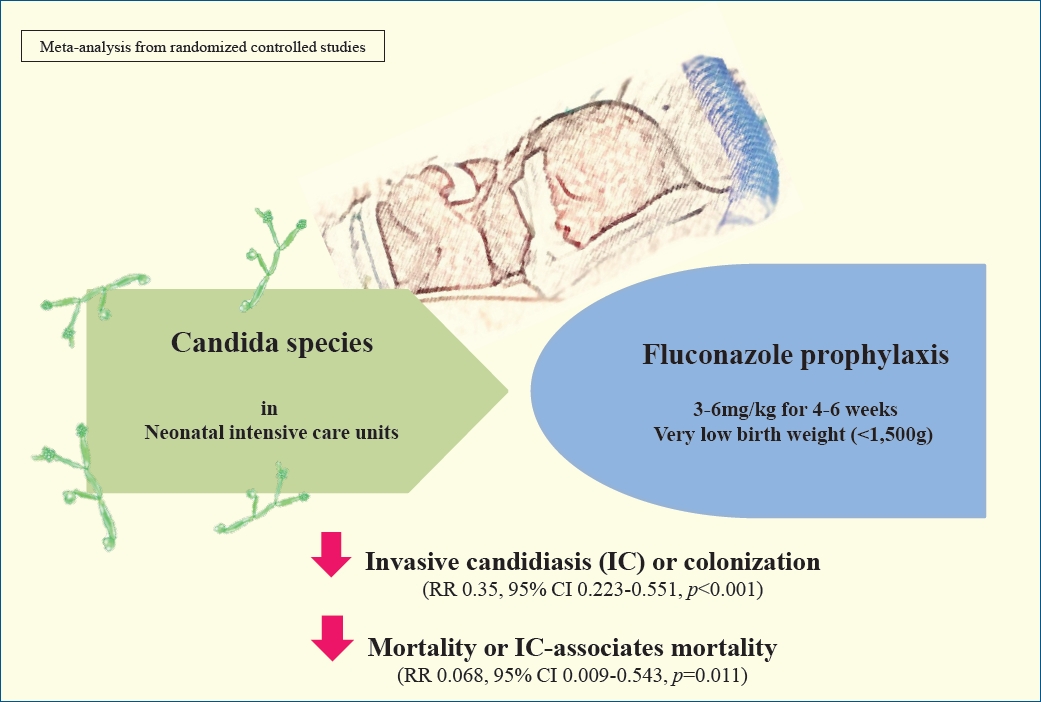
· Mortality is decreased significantly in meta-analysis of studies in different regimen of fluconazole prophylaxis.
· Significant decrease was seen in incidence of invasive candidiasis-associated mortality in extremely low birth weight infants in same schedules of prophylaxis.
· More studies required to relief the concerns.
- Effect of red blood cell transfusion on short-term outcomes in very low birth weight infants
- Eui Young Lee, Sung Shin Kim, Ga Young Park, Sun Hyang Lee
- Clin Exp Pediatr. 2020;63(2):56-62. Published online February 6, 2020
-
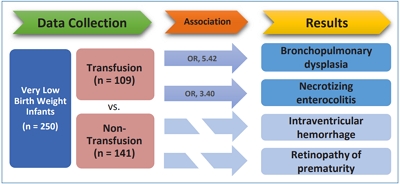
Question: Does RBC transfusion affect the short-term outcomes of VLBW infants?
Finding: The results showed that RBC transfusion was significantly related to the incidence of BPD (OR, 5.42; P<0.001) and NEC (OR, 3.40; P=0.009).
Meaning: Careful consideration of the patient’s clinical condition and appropriate guidelines is required before administering RBC transfusions.
- Review Article
- Neonatology (Perinatology)
- Short- and long-term outcomes of very low birth weight infants in Korea: Korean Neonatal Network update in 2019
- Jang Hoon Lee, YoungAh Youn, Yun Sil Chang; Korean Neonatal Network
- Clin Exp Pediatr. 2020;63(8):284-290. Published online February 5, 2020
-

The Korean Neonatal Network (KNN) has collected population-based data for very low birth weight infants (VLBWIs) born in Korea since 2013. The survival rate of all VLBWIs was 86% in Korea. The overall prevalence of cerebral palsy was 6.2%–6.6%. Bilateral blindness and hearing loss were reported in 0.2%–0.3%, 0.8%–1.9%, respectively. The KNN has published annual reports and papers for facilitating the improvement of VLBWIs outcome in Korea.
- Original Article
- Neonatology (Perinatology)
- Synbiotics use for preventing sepsis and necrotizing enterocolitis in very low birth weight neonates: a randomized controlled trial
- Ozge Serce Pehlevan, Derya Benzer, Tugba Gursoy, Guner Karatekin, Fahri Ovali
- Clin Exp Pediatr. 2020;63(6):226-231. Published online February 5, 2020
-
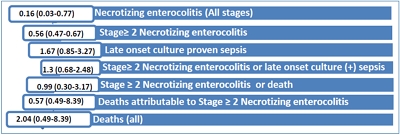
Background: Probiotics and prebiotics have strain-specific effects on the host. Synbiotics, a mixture of probiotics and prebiotics, are proposed to have more beneficial effects on the host than either agent has alone.
Purpose: We performed a randomized controlled trial to investigate the effect of Lactobacillus and Bifidobacterium together with oligosaccharides and lactoferrin on the development of necrotizing enterocolitis (NEC) or sepsis...
- Developmental and Behavioral Medicine
- Validity of the Korean Developmental Screening Test for very-low-birth-weight infants
- Chae Young Kim, Euiseok Jung, Byong Sop Lee, Ki-Soo Kim, Ellen Ai-Rhan Kim
- Clin Exp Pediatr. 2019;62(5):187-192. Published online March 20, 2019
-
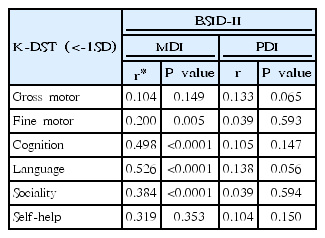
Purpose: The importance of the neurodevelopmental outcomes of very-low-birth-weight (VLBW) infants has been emphasized as their mortality rate has markedly improved. This study aimed to assess the validity of the Korean Developmental Screening Test (K-DST), a developmental screening tool approved by the Korean Society of Pediatrics, for the timely diagnosis of neurodevelopmental delay in VLBW infants. Methods: Subjects included VLBW infants...
- Neonatology (Perinatology)
- Association between vitamin D level at birth and respiratory morbidities in very-low-birth-weight infants
- Ian Kim, Sung Shin Kim, Jee In Song, Seock Hwa Yoon, Ga Young Park, Yong-Wha Lee
- Clin Exp Pediatr. 2019;62(5):166-172. Published online October 24, 2018
-
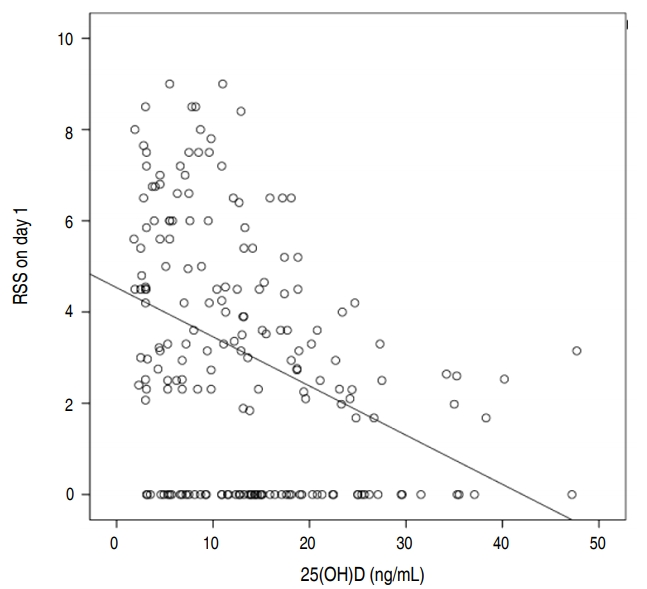
Purpose: This study aimed to evaluate vitamin D status at birth in very-low-birth-weight infants (VLBWIs: <1,500 g) and to determine the association between vitamin D level and respiratory morbidity. Methods: A retrospective study was conducted at Soonchunhyang University Bucheon Hospital between November 2013 and November 2017. We collected blood samples and data on respiratory morbidity from 230 VLBWIs on the first...
- The impact of a quality improvement effort in reducing admission hypothermia in preterm infants following delivery
- Han Saem Choi, Soon Min Lee, Hoseon Eun, Minsoo Park, Kook-In Park, Ran Namgung
- Clin Exp Pediatr. 2018;61(8):239-244. Published online August 15, 2018
-
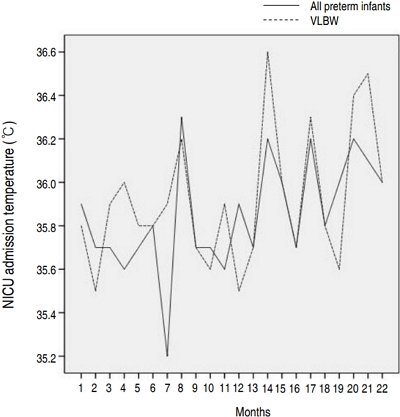
Purpose: Hypothermia at admission is associated with increased mortality and morbidity in preterm infants. We performed a quality improvement (QI) effort to determine the impact of a decrease in admission hypothermia in preterm infants. Methods: The study enrolled very low birth weight (VLBW) infants born at Gangnam Severance Hospital between January 2013 and December 2016. This multidisciplinary QI effort included the...
- Comparison of postnatal catch-up growth according to definitions of small for gestational age infants
- Jisun Huh, Ji Yoon Kwon, Hye Ryun Kim, Eun Hee Lee, Young-Jun Rhie, Byung Min Choi, Kee-Hyoung Lee
- Clin Exp Pediatr. 2018;61(3):71-77. Published online March 19, 2018
-
Purpose Small for gestational age (SGA) is confusingly defined as birth weight (BW) either below 3rd percentile or 10th percentile for infants. This study aimed to compare postnatal catch-up growth between SGA groups according to different definitions.
Methods Data of 129 infants born with BW below the 10th percentile and admitted to Korea University Anam Hospital and Ansan Hospital were retrospectively reviewed. Height...
- Postdischarge growth assessment in very low birth weight infants
- Joon-Sik Park, Jungho Han, Jeong Eun Shin, Soon Min Lee, Ho Seon Eun, Min-Soo Park, Kook-In Park, Ran Namgung
- Clin Exp Pediatr. 2017;60(3):64-69. Published online March 27, 2017
-
Purpose The goal of nutritional support for very-low-birth-weight (VLBW) infants from birth to term is to match the
in utero growth rates; however, this is rarely achieved.Methods We evaluated postdischarge growth patterns and growth failure in 81 Korean VLBW infants through a retrospective study. Weight and height were measured and calculated based on age percentile distribution every 3 months until age 24...
- Modification of nutrition strategy for improvement of postnatal growth in very low birth weight infants
- Ah Young Choi, Yong Wook Lee, Mea-young Chang
- Clin Exp Pediatr. 2016;59(4):165-173. Published online April 30, 2016
-
Purpose To identify the effects of modified parenteral nutrition (PN) and enteral nutrition (EN) regimens on the growth of very low birth weight (VLBW) infants.
Methods The study included VLBW infants weighing <1,500 g, admitted to Chungnam National University Hospital between October 2010 and April 2014, who were alive at the time of discharge. Subjects were divided according to 3 periods: period 1...
- Case Report
- Neonatology (Perinatology)
- Successfully treated infective endocarditis caused by methicillin-resistant
Staphylococcus Aureus in extremely low birth weight infant - Sehwa Jung, Kyung Uk Jeong, Jang Hoon Lee, Jo Won Jung, Moon Sung Park
- Clin Exp Pediatr. 2016;59(2):96-99. Published online February 29, 2016
-
Survival rates of preterm infants have improved in the past few decades, and central venous catheters play an important role in the intensive medical treatment of these neonates. Unfortunately, these indwelling catheters increase the risk of intracardiac thrombosis, and they provide a nidus for microorganisms during the course of septicemia. Herein, we report a case of persistent bacteremia due to...
- Review Article
- Endocrinology
- Catch-up growth and catch-up fat in children born small for gestational age
- Won Kyoung Cho, Byung-Kyu Suh
- Clin Exp Pediatr. 2016;59(1):1-7. Published online January 22, 2016
-
Infants born small for gestational age (SGA) are at increased risk of perinatal morbidity, persistent short stature, and metabolic alterations in later life. Recent studies have focused on the association between birth weight (BW) and later body composition. Some reports suggest that fetal nutrition, as reflected by BW, may have an inverse programing effect on abdominal adiposity later in life....
- Original Article
- Thyroid dysfunction in very low birth weight preterm infants
- Ji Hoon Lee, Sung Woo Kim, Ga Won Jeon, Jong Beom Sin
- Clin Exp Pediatr. 2015;58(6):224-229. Published online June 22, 2015
-
Purpose Thyroid dysfunction is common in preterm infants. Congenital hypothyroidism causes neurodevelopmental impairment, which is preventable if properly treated. This study was conducted to describe the characteristics of thyroid dysfunction in very low birth weight infants (VLBWIs), evaluate risk factors of hypothyroidism, and suggest the reassessment of thyroid function with an initially normal thyroid-stimulating hormone (TSH) as part of a newborn...
- Postnatal weight gain in the first two weeks as a predicting factor of severe retinopathy of prematurity requiring treatment
- Jongmoon Kim, Jang Yong Jin, Sung Shin Kim
- Clin Exp Pediatr. 2015;58(2):52-59. Published online February 28, 2015
-
Purpose This study aimed to investigate the relative weight gain at 2-week intervals up to 6 weeks after birth to predict retinopathy of prematurity (ROP) requiring treatment among very low birth weight infants.
Methods A total of 211 preterm infants with birth weights <1,500 g and gestational age <32 weeks were retrospectively reviewed. The main outcome was the development of ROP requiring treatment....
- Analysis of the association between necrotizing enterocolitis and transfusion of red blood cell in very low birth weight preterm infants
- Seon-Yeong Bak, Sihyoung Lee, Jae-Hong Park, Kyu-Hee Park, Ji-Hyun Jeon
- Clin Exp Pediatr. 2013;56(3):112-115. Published online March 18, 2013
-
Purpose To investigate the association between necrotizing enterocolitis (NEC) and red blood cell transfusions in very low birth weight (VLBW) preterm infants.
Methods We studied were 180 VLBW preterm infants who were admitted to the neonatal intensive care unit of CHA Gangnam Hospital from January of 2006 to December of 2009. The subjects were divided into 2 groups: an NEC group (greater than...
- The control of invasive
Candida infection in very low birth weight infants by reduction in the use of 3rd generation cephalosporin - Yu Jin Chang, Il Rak Choi, Won Sub Shin, Jang Hoon Lee, Yun Kyung Kim, Moon Sung Park
- Clin Exp Pediatr. 2013;56(2):68-74. Published online February 25, 2013
-
Purpose To evaluate the effectiveness of new management policies on the incidence of invasive Candida infections
Methods This observational study involved a retrospective analysis of the patients' medical records. In total, 99 very low birth weight infants, who were admitted to the neonatal intensive care unit at Ajou University Hospital from January 2010 to December 2011, were enrolled for the study. Period I,...
- Effect of early postnatal neutropenia in very low birth weight infants born to mothers with pregnancy-induced hypertension
- Yang Hee Park, Gyung Min Lee, Jung Min Yoon, Enn Jung Cheon, Kyung Ok Ko, Yung Hyuk Lee, Jae Woo Lim
- Clin Exp Pediatr. 2012;55(12):462-469. Published online December 20, 2012
-
Purpose In this study, we aimed to investigate the perinatal clinical conditions of very low birth weight (VLBW) infants born to mothers with pregnancy-induced hypertension (PIH) focusing on the effects of early postnatal neutropenia.
Methods We reviewed the medical records of 191 VLBW infants who were born at Konyang University Hospital, between March 2003 and May 2011. We retrospectively analyzed the clinical characteristics...
- Birth statistics of high birth weight infants (macrosomia) in Korea
- Byung-Ho Kang, Joo-Young Moon, Sung-Hoon Chung, Yong-Sung Choi, Kyung-Suk Lee, Ji-Young Chang, Chong-Woo Bae
- Clin Exp Pediatr. 2012;55(8):280-285. Published online August 23, 2012
-
Purpose The authors analyzed the trend from the birth-related statistics of high birth weight infants (HBWIs) over 50 years in Korea from 1960 to 2010.
Methods We used 2 data sources, namely, the hospital units (1960's to 1990's) and Statistics Korea (1993 to 2010). The analyses include the incidence of HBWIs, birth weight distribution, sex ratio, and the relationship of HBWI to maternal...
- Review Article
- The changing trends in live birth statistics in Korea, 1970 to 2010
- Jae Woo Lim
- Clin Exp Pediatr. 2011;54(11):429-435. Published online November 30, 2011
-
Although Korean population has been growing steadily during the past four decades, the nation is rapidly becoming an aging society because of its declining birth rate combined with an increasing life expectancy. In addition, Korea has one of the lowest fertility rates in the world due to fewer married couples, advanced maternal age, and falling birth rate. The prevalence of...
- Original Article
- Outcomes of small for gestational age micropremies depending on how young or how small they are
- Hee Joon Yu, Eun Sun Kim, Jin Kyu Kim, Hye Soo Yoo, So Yoon Ahn, Yun Sil Chang, Won Soon Park
- Clin Exp Pediatr. 2011;54(6):246-252. Published online June 30, 2011
-
Purpose The outcomes of small for gestational age (SGA) infants especially in extremely low birth weight infants (ELBWIs) are controversial. This study evaluated the mortality and morbidity of ELBWIs, focusing on whether or not they were also SGA.
Methods The medical records of 415 ELBWIs (birth weight <1,000 g), who were inborn and admitted to the Samsung Medical Center neonatal intensive care unit...
- A study on the measurement of the nucleated red blood cell (nRBC) count based on birth weight and its correlation with perinatal prognosis in infants with very low birth weights
- Tae Hwan Kil, Ji Yeon Han, Jun Bum Kim, Gyeong Ok Ko, Young Hyeok Lee, Kil Young Kim, Jae Woo Lim
- Clin Exp Pediatr. 2011;54(2):69-78. Published online February 28, 2011
-
Purpose The aim of this study was conducted to investigate the mean nRBC count in very low births weight infants (VLBWIs) and to determine the usefulness of the nRBC as an independent prognostic factors of perinatal complications in VLBWIs.
Methods This study was conducted on 112 VLBWIs who were hospitalized in the neonatal intensive care unit (NICU) of the author's hospital within the...
- Case Report
- Testicular torsion in the inguinal region in an extremely low birth weight infant
- Yu Jin Jung, Jae Min Chung
- Clin Exp Pediatr. 2010;53(9):852-854. Published online September 13, 2010
-
Testicular torsion is rare in newborn infants. However, its frequency has increased, most of which are reported in full-term infants. We diagnosed and treated testicular torsion in an extremely low birth weight infant (ELBWI). A 2×2 cm red mass was palpable in the left groin of a 24-week-old, 745 g, male newborn at 23 days of age. Left testicular torsion...
- Original Article
- Effect of severe neonatal morbidities on long term outcome in extremely low birthweight infants
- Kyo Yeon Koo, Jeong Eun Kim, Soon Min Lee, Ran Namgung, Min Soo Park, Kook In Park, Chul Lee
- Clin Exp Pediatr. 2010;53(6):694-700. Published online June 23, 2010
-
Purpose To assess the validity of individual and combined prognostic effects of severe bronchopulmonary dysplasia (BPD), brain injury, retinopathy of prematurity (ROP), and parenteral nutrition associated cholestasis (PNAC).
Methods We retrospectively analyzed the medical records of 80 extremely low birthweight (ELBW) infants admitted to the neonatal intensive care unit (NICU) of the Severance Children's Hospital, and who survived to a postmenstrual age of...
- Effect of SynagisⓇ (palivizumab) prophylaxis on readmission due to respiratory syncytial virus in very low birth weight infants
- Soo Kyoung Park, Yu Jin Jung, Hye Soo Yoo, So Yoon Ahn, Hyun Joo Seo, Seo Heui Choi, Myo Jing Kim, Ga Won Jeon, Soo Hyun Koo, Kyung-Hoon Lee, Yun Sil Chang, Won Soon Park
- Clin Exp Pediatr. 2010;53(3):358-363. Published online March 15, 2010
-
Purpose : The aim of this study was to determine the efficacy of SynagisⓇ (palivizumab) in reducing the respiratory syncytial virus (RSV) readmission rate in very low birth weight infants (VLBWI ) and the subgroup that showed the most effective vaccination. Methods : We enrolled 350 VLBWI who had been discharged alive from the neonatal intensive care unit of Samsung Medical... -
- Case Report
- High-dose caspofungin salvage in a very-low-birth-weight infant with refractory candidemia
- Eun Sun Seo, Geun Hwa Park, Sung Mi Kim, Hye An Jung, Byoung Kuk Kim
- Clin Exp Pediatr. 2010;53(2):239-243. Published online February 15, 2010
-
Candidiasis is one of the most common causes of late-onset infection among very-low-birth-weight infants (VLBW) in most neonatal intensive care units and is associated with significant morbidity and mortality. Standard therapy consists of the administration of amphotericin B, amphotericin B complex, and fluconazole. In many cases, candidiasis is not easily eradicated, despite the administration of these drugs. We report our... -
-

-
-
8.02023CiteScore94th percentilePowered by
-
Impact Factor3.2
-
- TOPICS
- ARTICLE CATEGORY
- Editorial Office
-
Korean Pediatric Society
#1606 Seocho World Officetel, 19 Seoun-ro, Seocho-ku, Seoul 06732, Korea
Tel: +82-2-3473-7306 Fax: +82-2-3473-7307 E-mail: office@e-cep.org
Clinical and Experimental Pediatrics is an open access journal. All articles are distributed under the terms of the Creative Commons Attribution NonCommercial License (http://creativecommons.org/licenses/by-nc/4.0/)
Copyright © 2025 by Korean Pediatric Society.











